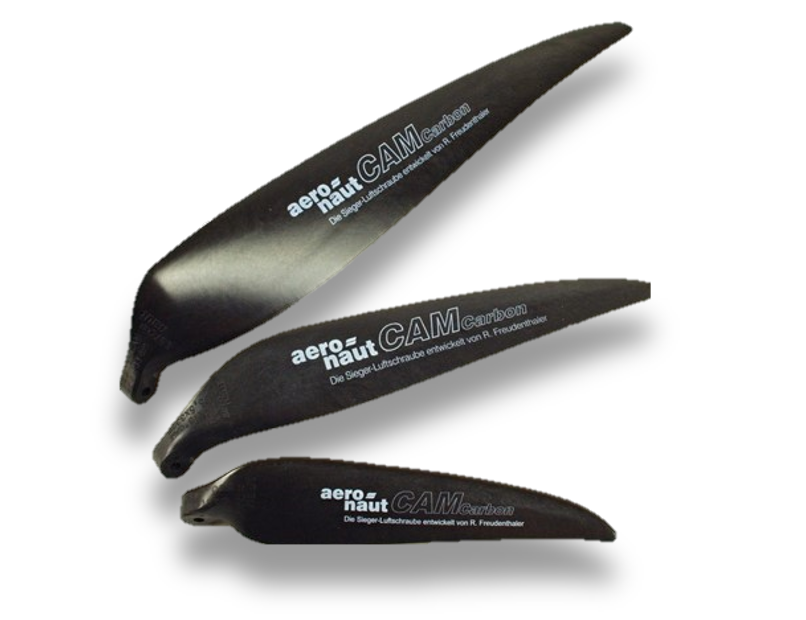Aero-Naut CAM Carbon Folding Propellers
Description

Performance testing was conducted on 40 Aero-Naut CAM Carbon Folding propellers in the UIUC low-turbulence subsonic wind tunnel using a propeller testing balance. The testing setup was adapted from and validated to several previous works. These propellers tested had a 2-blade configuration with diameters of 9 to 16~in with various pitch values; a list of tested propellers can be found here . Testing was performed at rotation rates of 3,000 to 7,000~RPM and advancing flows of 8 to 80~ft/s, depending on the propeller and testing equipment limitations.
It was observed that Aero-Naut CAM carbon folding propeller blade geometry varied among propellers of the same diameter with different pitch values and among propellers of identical pitch-to-diameter ratios with different diameters. This geometry difference results in unique performance data for each propeller, therefore requiring individual performance testing of all propellers of interest. It was also found that increasing the pitch of a given diameter of propeller increases the non-dimensional performance and efficiency of the propeller, while shifting these characteristics toward higher advance ratios. The performance and efficiency increases continue with pitch until the propeller pitch-to-diameter ratio reaches approximately 0.8 to 1.0, after which the increase stabilizes, flattens over larger advance ratios, and sometimes then decreases. Similarly, for static conditions (zero velocity), increased propeller pitch increases thrust and power coefficients. Finally, Reynolds number effects were observed, with performance and efficiency increasing as RPM increases until a sufficiently high RPM is reached where there is marginal continued gain. Further details can be found in Dantsker, Caccamo, Deters, and Selig (2020)